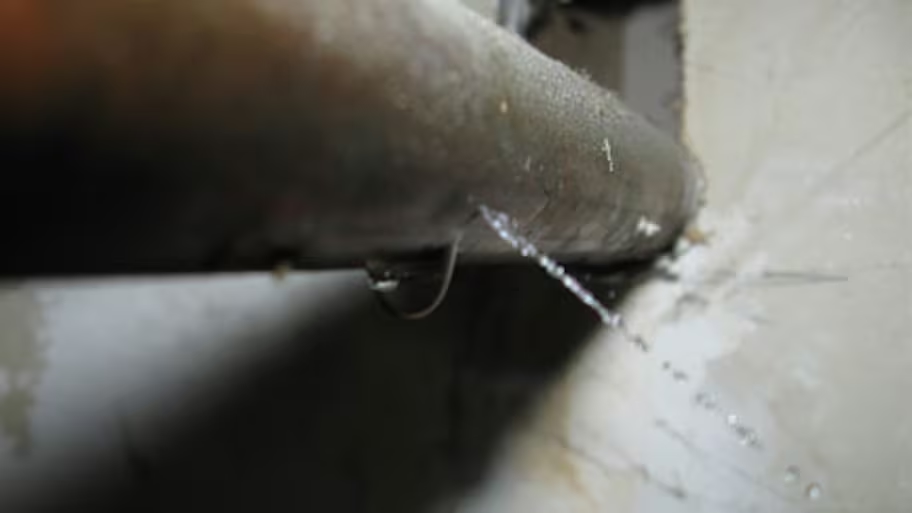Revealing the Primary Sources of Water Leaks Inside The House
Revealing the Primary Sources of Water Leaks Inside The House
Blog Article
Were you trying to find advise concerning How Fast Water Damage Can Ruin Your Home?

Leaks not only trigger waste of water yet can likewise create unneeded damage to your home and promote undesirable natural growth. Unfortunately, water leaks might go undetected because the majority of the pipework in our residence is concealed. By looking as well as understanding for everyday situations that trigger leaks, you can protect your home from future leakages and unneeded damages. Today, we will take a look at six leak triggers that might be triggering your pipelines to leak.
Trespassing origins
A lot of water leakages start outside the home rather than inside it. You might discover damp patches or sinkholes in your yard, and that may imply that tree origins are attacking water lines causing water to seep out.
Rusty water supply
As time passes by, your plumbing system ages as well as rust such as rust may begin gnawing the pipes. This might be the root cause of staining or bending on your water pipes. This asks for an inspection with your plumber promptly. If our plumbing system is old, take into consideration changing the pipes given that they go to a higher threat of deterioration than the newer versions.
Defective Pipeline Joints
The point at which your pipelines attach is regularly the weakest link in the waterline. Pipeline joints can deteriorate with time, causing water leakages. Regrettably, the majority of pipeline joints are not easily noticeable. If you have loud pipelines that make ticking or banging noises, particularly when the warm water is switched on, your pipe joints are most likely under a great deal of stress. It is advisable to have your plumber inspect your system annually.
Instantaneous temperature adjustments.
Severe temperature adjustments in our pipelines can cause them to broaden and also contract unexpectedly. This development as well as tightening might create cracks in the pipes, particularly if the temperature are below freezing.
Poor Water Connectors
Sometimes, a leakage can be caused by loosened hoses and pipelines that supply your devices. Typically, changing is what creates the loosened water Connections. You might find in the case of a cleaning machine, a hose pipe may spring a leak due to trembling throughout the spin cycle. In case of a water links leakage, you may see water running straight from the supply line or pools around your home appliances.
Blocked Drains
Blocked drains pipes could be irritating as well as inconveniencing, yet they can in some cases end up creating an overflow causing break pipes. Maintain eliminating any type of materials that might drop your drains that might block them to avoid such aggravations.
All the above are sources of leakages but not all water leaks result from plumbing leakages; some leaks could originate from roof covering leaks. All leaks must be repaired promptly to prevent water damage.
Leakages not just create waste of water but can additionally cause unneeded damage to your home as well as promote undesirable natural development. By comprehending and looking for day-to-day scenarios that trigger leaks, you can shield your residence from future leaks and also unnecessary damage. Today, we will certainly look at 6 leak creates that might be creating your pipes to leak.
At times, a leak can be caused by loosened tubes and also pipes that provide your home appliances. In situation of a water links leakage, you may observe water running directly from the supply line or pools around your appliances.
How To Check For Water Leak In Your Home
How To Check for Leaks
The average household's leaks can account for nearly 10,000 gallons of water wasted every year and ten percent of homes have leaks that waste 90 gallons or more per day. Common types of leaks found in the home are worn toilet flappers, dripping faucets, and other leaking valves. These types of leaks are often easy to fix, requiring only a few tools and hardware that can pay for themselves in water savings. Fixing easily corrected household water leaks can save homeowners about 10 percent on their water bills.
To check for leaks in your home, you first need to determine whether you're wasting water and then identify the source of the leak. Here are some tips for finding leaks:
Take a look at your water usage during a colder month, such as January or February. If a family of four exceeds 12,000 gallons per month, there are serious leaks.
Check your water meter before and after a two-hour period when no water is being used. If the meter changes at all, you probably have a leak.
Identify toilet leaks by placing a drop of food coloring in the toilet tank. If any color shows up in the bowl after 10 minutes, you have a leak. (Be sure to flush immediately after the experiment to avoid staining the tank.)
Examine faucet gaskets and pipe fittings for any water on the outside of the pipe to check for surface leaks.
Undetected water leaks can happen without the home or business owner even realizing. If you suspect a water leak, but not able to find the source. It is time to contact a professional water leak detection service, The Leak Doctor.
How To Find a Water Leak In Your Home
https://www.leakdoctor.com/blog/How-To-Check-For-Water-Leak-In-Your-Home_AE197.html

Do you like reading up on Top Causes of Home Water Leaks? Post a review down below. We'd be pleased to hear your thoughts about this review. In hopes to see you back again in the future. Loved our entry? Please share it. Let another person find it. Thanks a lot for your time invested reading it.
Schedule Your Job Now Report this page